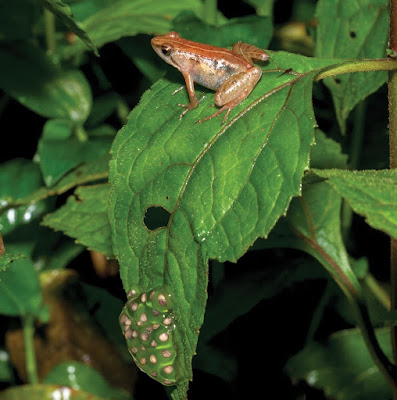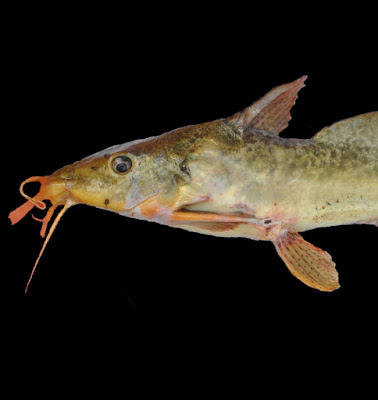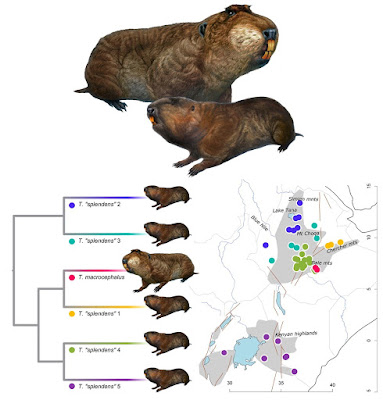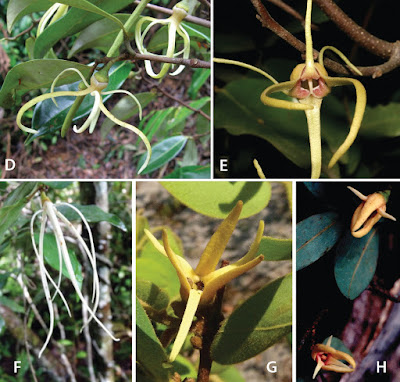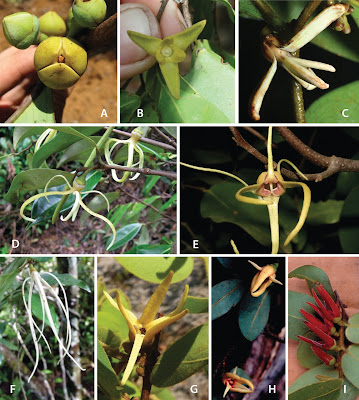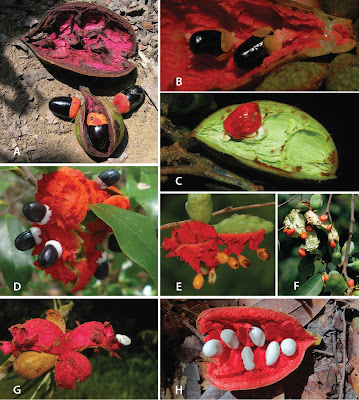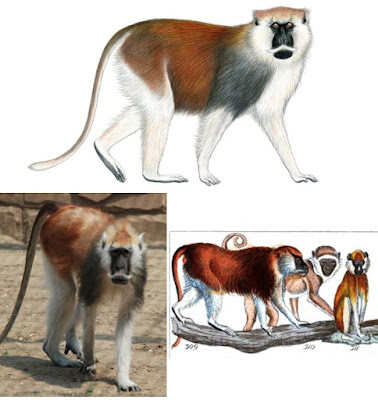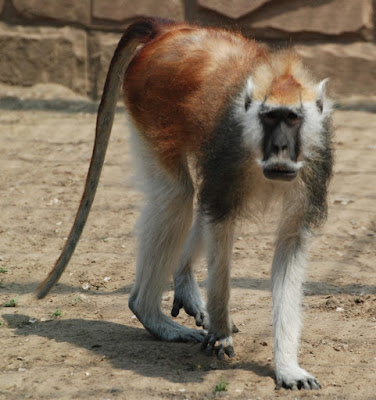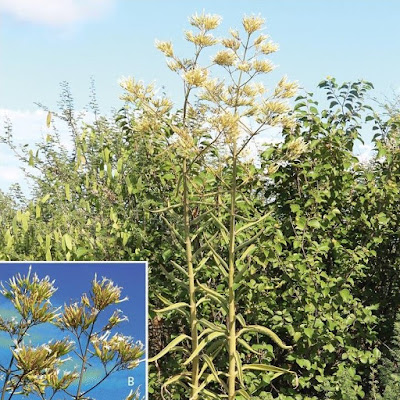 |
| Kalanchoe hypseloleuce Friis & M. G. Gilbert |
Summary
A new species of Kalanchoe, Kalanchoe hypseloleuce Friis & M. G. Gilbert, was found during field work in Ethiopia in 2015, and is established here. It is characterised by its tall stature (2 – 3 m), entire, sessile, lanceolate leaves and pure white flowers with abaxially minutely papillose corolla lobes (otherwise, the plant is glabrous). It is not obviously related to any previously known species, but an earlier, incomplete specimen has been cited as K. prittwitzii Engl. in the literature. K. hypseloleuce was collected on limestone in Acacia-Commiphora woodland and bushland at c. 1400 m a.s.l. It occurs in the southern part of the eastern Ethiopian escarpment in the Arsi and Eastern Harerghe zones of the Oromo Regional State. K. hypseloleuce is documented with images and maps, its climate envelope has been modelled, and a conservation assessment made. With the current level of threat, this could be Vulnerable to Near Threatened (VU-NT). Given the threat from habitat degradation is not imminent, we recommend the species to be listed as Near Threatened (NT).
Key Words: Acacia-Commiphora bushland, Afromontane forest, conservation, limestone, monocarpic, taxonomy, transitional semi-evergreen bushland
Kalanchoe hypseloleuce Friis & M. G. Gilbert, sp. nov.
ETYMOLOGY. Our new epithet, hypseloleuce, is a compound of two Greek adjectives. The first, ψηλός, ή, όν, ‘high, lofty, (metaphorically) stately’, refers to the impressive height of the plant, it being one of the tallest known species of Kalanchoe in Africa. The second, λευκός, -ή, -όν, ‘light, bright, (of colour) white’, refers to the pure white flowers. The connecting vowel –o– is in agreement with Rec. 60G(a2) of the Code (McNeill et al. 2012). The generic name, Kalanchoe Adans. (Adanson 1763: 248), is said to be an adaptation of a Chinese name for a species in the genus (Harvey 1862) or derived from a Hindi word ‘kalanka’, meaning ‘rust’ or ‘spot’ (Quattrocchi 2000). In botanical literature, Kalanchoe is treated as feminine and, in agreement with Art, 23.5 of the Code, the feminine form of the terminal adjective is used.
Ib Friis, Michael G. Gilbert, Paulo van Breugel, Odile Weber and Sebsebe Demissew. 2017. Kalanchoe hypseloleuce (Crassulaceae), A New Species from eastern Ethiopia, with Notes on its Habitat. Kew Bulletin. 72:30. DOI: 10.1007/s12225-017-9704-7
---------------------------------------------------------------
روابط التحميل والمشاهدة، الروابط المباشرة للتحميل
او
شاهد هذا الفيديو القصير لطريقة التحميل البسيطة
كيف تحصل على مدونة جاهزة بآلاف المواضيع والمشاركات من هنا
شاهد قناة منتدى مدونات بلوجر جاهزة بألاف المواضيع والمشاركات على اليوتيوب لمزيد من الشرح من هنا
رابط مدونة منتدى مدونات بلوجر جاهزة بآلاف المواضيع والمشاركات في أي وقت حــــتى لو تم حذفها من هنا
شاهد صفحة منتدى مدونات بلوجر جاهزة بألاف المواضيع والمشاركات على الفيس بوك لمزيد من الشرح من هنا
شاهد صفحة منتدى مدونات بلوجر جاهزة بألاف المواضيع والمشاركات على الفيس بوك لمزيد من الشرح من هنا
تعرف على ترتيب مواضيع منتدى مدونات بلوجر جاهزة بآلاف المواضيع والمشاركات (حتى لا تختلط عليك الامور) من هنا
ملاحظة هامة: كل عمليات تنزيل، رفع، وتعديل المواضيع الجاهزة تتم بطريقة آلية، ونعتذر عن اي موضوع مخالف او مخل بالحياء مرفوع بالمدونات الجاهزة بآلاف المواضيع والمشاركات، ولكم ان تقوموا بحذف هذه المواضيع والمشاركات والطريقة بسيطة وسهلة. ــــــــــــــــــــــــــــــــــــــــــــــــــــــــــــــــــــــــــــــسلامـ.






